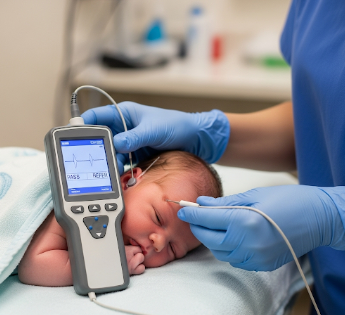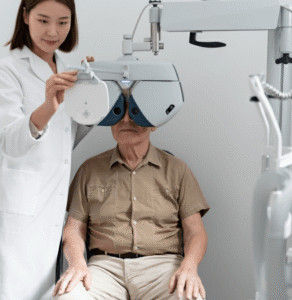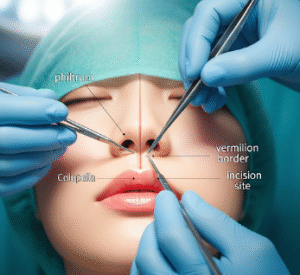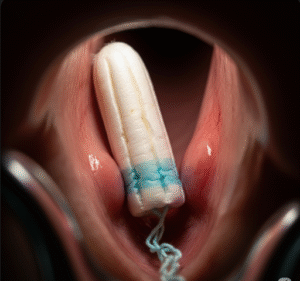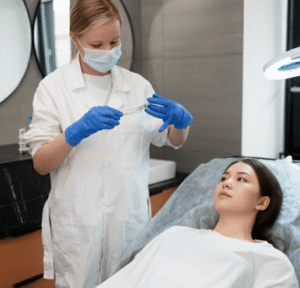What it is
Newborn hearing screening is a non-invasive, painless test performed shortly after birth to detect hearing impairment or loss in infants. Hearing is a critical sense for speech, language development, and cognitive growth, and early detection of hearing issues allows timely intervention, preventing long-term developmental delays.
Key points:
- Conducted within the first 48–72 hours of life, though it can be performed later if needed.
- Uses Otoacoustic Emissions (OAE) or Auditory Brainstem Response (ABR) technology to assess hearing.
- Typically takes 10–30 minutes and does not involve injections or surgery.
- Identifies congenital hearing loss, which occurs in approximately 1–3 per 1,000 newborns.
Hearing screening in newborns is considered an essential part of routine neonatal care because many infants with hearing loss show no obvious symptoms at birth, making early screening crucial.
Why it’s done
The primary goal of newborn hearing screening is early detection of hearing loss, which is essential for normal development:
- Early intervention: Allows for timely use of hearing aids, cochlear implants, or speech therapy.
- Prevent developmental delays: Untreated hearing loss can lead to speech, language, and cognitive delays, affecting learning and social interaction.
- Monitor high-risk infants: Babies with family history of hearing loss, premature birth, or neonatal intensive care unit (NICU) admission are at higher risk.
- Public health impact: Detecting hearing loss early reduces the prevalence of untreated deafness and supports community health initiatives.
Examples of conditions detected:
- Congenital hearing loss: Present from birth due to genetic or environmental factors.
- Sensorineural hearing loss: Caused by inner ear or auditory nerve dysfunction.
- Auditory neuropathy spectrum disorder: Affects how sound is transmitted from the ear to the brain.
Note: Early detection significantly improves outcomes, as children identified before 6 months of age benefit most from interventions that enhance language acquisition and social development.
Alternatives
While newborn hearing screening is the gold standard, other options exist:
- Behavioral observation: Assessing the newborn’s response to sound (crying, blinking, or startle reflex). Less reliable, particularly in the first weeks.
- Diagnostic audiology testing: For infants with a failed initial screen or known risk factors, more comprehensive testing such as ABR is performed.
- Parental observation: Monitoring responses to sounds at home. While helpful, this method is not sufficient for early detection.
Important: The OAE and ABR-based screening methods are preferred because they can detect subtle hearing loss that would otherwise go unnoticed.
Preparation
Preparation for newborn hearing screening is minimal but important for accurate results:
- Timing: Ideally after the baby is at least 24 hours old and feeding well.
- Calm environment: Screening should be performed when the baby is asleep or calm, as movement can interfere with measurements.
- Parental consent: Healthcare providers explain the purpose, procedure, and potential outcomes to parents or guardians.
- No fasting required: The baby can feed normally before or after the test.
Patient instructions for parents:
- Keep the baby comfortable and swaddled during the test.
- Avoid exposing the baby to loud noises immediately before testing.
- Be aware that some infants may require repeat testing if results are inconclusive.
How it’s done
There are two primary methods for newborn hearing screening:
- Otoacoustic Emissions (OAE):
- A small probe is placed in the baby’s ear.
- The probe emits soft clicks or tones and measures echoes produced by the inner ear.
- The test is quick (5–10 minutes per ear) and painless.
- Often used as the first-line screening method for all newborns.
- Auditory Brainstem Response (ABR):
- Electrodes are placed on the baby’s head to measure brain responses to sound.
- Particularly useful for high-risk infants or when OAE results are unclear.
- The test may take 10–30 minutes.
- Provides a more detailed assessment of the auditory pathway, from the ear to the brainstem.
Procedure overview:
- Baby is positioned comfortably, often on a parent’s lap.
- Ear is cleaned, and the probe or electrodes are applied.
- Sounds are played, and responses are recorded.
- Results are categorized as “pass” (normal hearing) or “refer” (further evaluation needed).
Note: The tests are completely non-invasive, cause minimal discomfort, and do not require sedation in most cases.
Recovery / Post-Test Considerations
Recovery is virtually immediate since the screening is non-invasive:
- No downtime: The baby can resume feeding and normal activity immediately.
- Heel care (if any puncture for blood tests is done simultaneously): Apply gentle pressure to stop minor bleeding.
- Result interpretation:
- Pass: Indicates normal hearing; no further immediate action required.
- Refer: Indicates potential hearing loss; follow-up diagnostic testing is recommended.
Benefits of early detection:
- Timely identification allows for hearing aids or cochlear implants, if needed.
- Early intervention supports speech, language, and cognitive development.
- Families receive guidance and support to optimize the child’s developmental outcomes.
Complications / Risks
Newborn hearing screening is generally very safe:
- Minimal discomfort: Some babies may fuss briefly during the test.
- False positives/negatives: Occasionally, repeat testing is needed.
- Parental anxiety: A “refer” result may cause concern, but diagnostic testing confirms actual status.
Rare risks:
- Skin irritation from electrodes or ear probes.
- Slight disruption to the baby’s sleep during testing.
Management / Prevention:
- Screening conducted by trained audiologists or neonatal nurses.
- Quiet testing environment to reduce false positives.
- Repeat testing ensures accurate detection and appropriate follow-up.
Follow-Up and Early Intervention
If a newborn is identified with hearing loss:
- Confirmatory testing: Full audiology assessment is performed.
- Specialist referral: ENT specialists or pediatric audiologists guide treatment.
- Early intervention programs: Speech therapy, auditory training, and use of hearing devices.
- Family education: Parents receive training to support communication and language development.
Importance: Children who receive intervention before 6 months show significantly improved speech and language outcomes compared to delayed intervention.
Treatment Options in Korea
Newborn hearing screening is widely implemented in hospitals and birthing centers across Korea.
Key features:
- Screening is often part of national newborn health programs.
- Available for all newborns, with additional follow-up for high-risk infants.
- Modern facilities provide OAE, ABR, and diagnostic audiology.
- Early intervention programs offer hearing aids, cochlear implants, and speech therapy.
- Specialists guide parents through long-term developmental planning for children with hearing loss.
Benefits in Korea:
- Ensures timely detection and management of hearing impairment.
- Promotes speech, language, and cognitive development.
- Supports public health monitoring and preventive care initiatives.
- Improves quality of life and long-term outcomes for children with hearing loss.
Additional Considerations for Parents
- Regular pediatric follow-up ensures that hearing and language milestones are monitored.
- Parents should observe for signs of delayed speech or limited response to sounds, even if the screening was normal.
- In case of progressive or late-onset hearing loss, ongoing monitoring is crucial.
- Family support and counseling help parents adjust and access resources for their child.
Summary: Newborn hearing screening in Korea is a safe, effective, and essential tool for early identification of hearing loss. With proper follow-up, intervention, and support, children can achieve optimal speech, language, and cognitive development, improving lifelong communication skills and quality of life.

